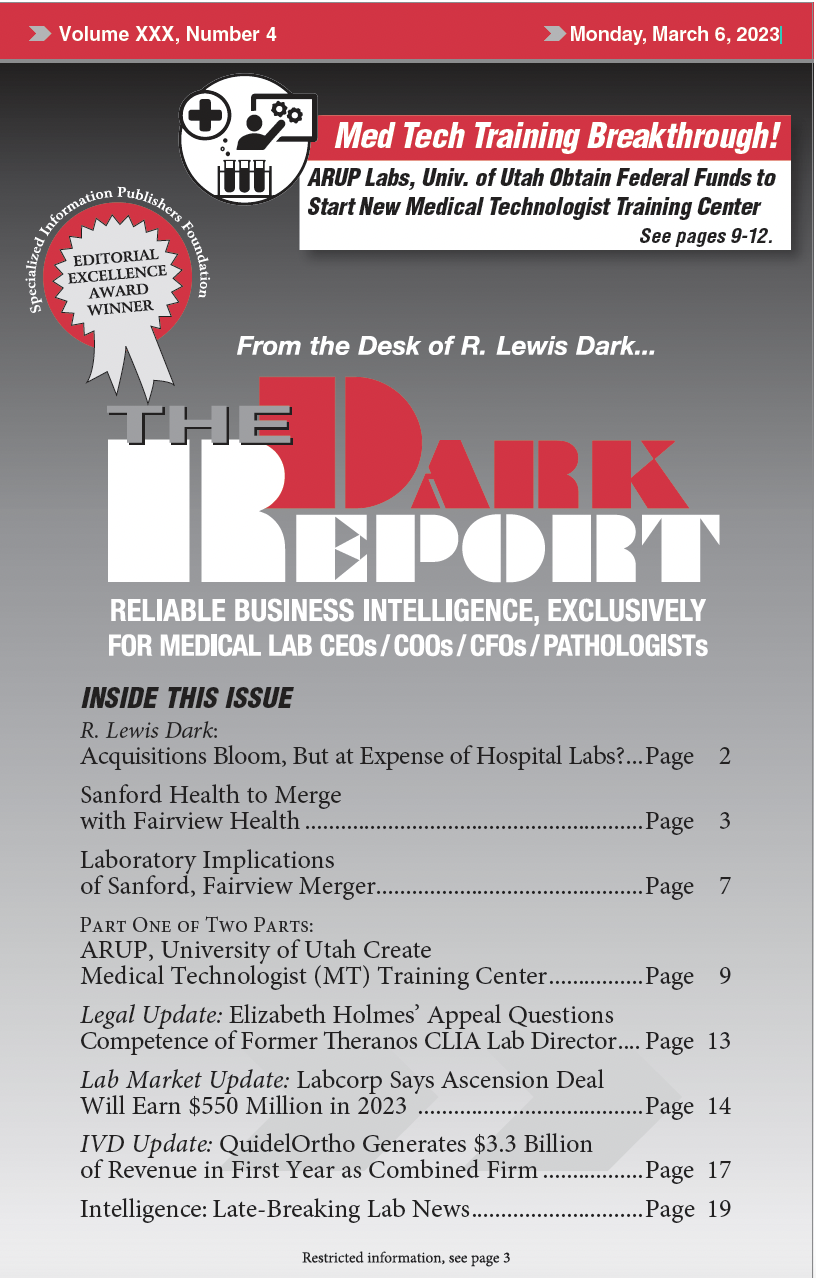CEO SUMMARY: It’s the latest example of a merger involving two big integrated delivery networks (IDNs). Sanford Health in South Dakota inked an agreement to merge with Fairview Health Services in Minneapolis. This deal confirms the growing trend of consolidation among multi-hospital health systems. The question of greater interest for clinical lab managers and pathologists …
Sanford Health to Merge with Fairview Health Services Read More »
To access this post, you must purchase The Dark Report.


